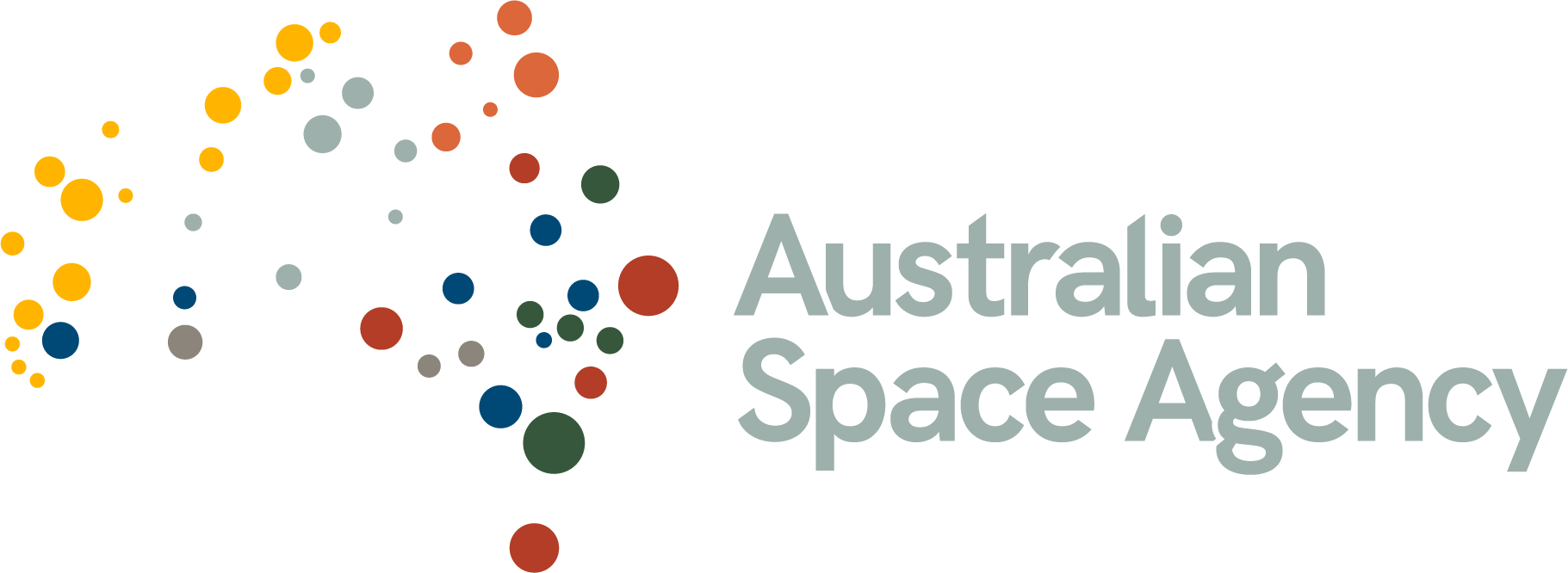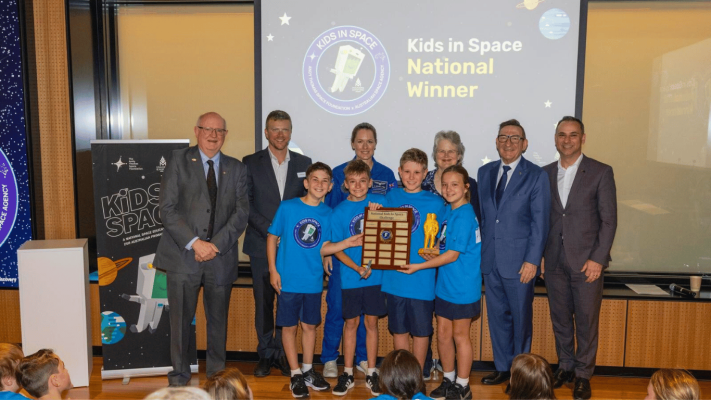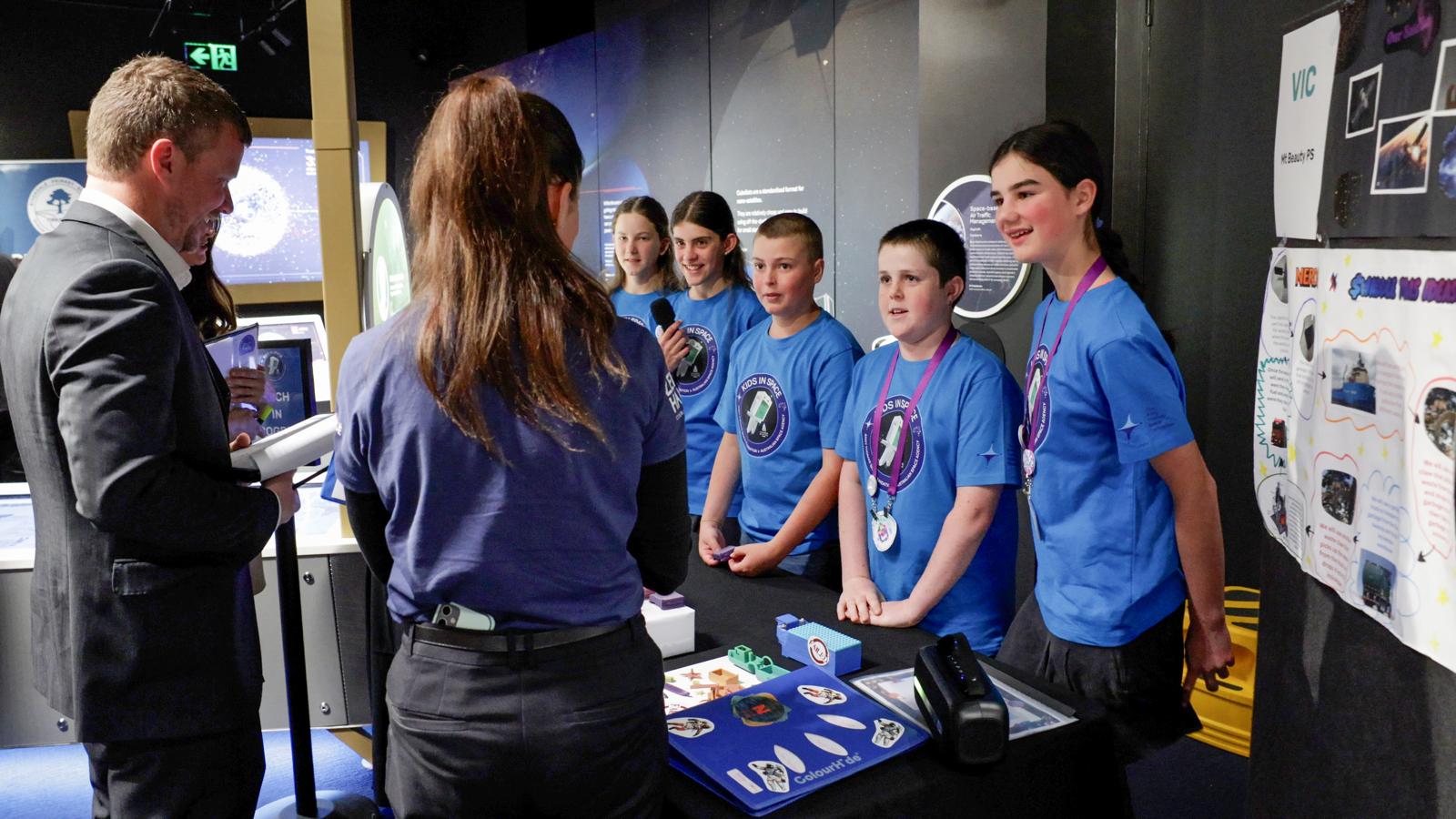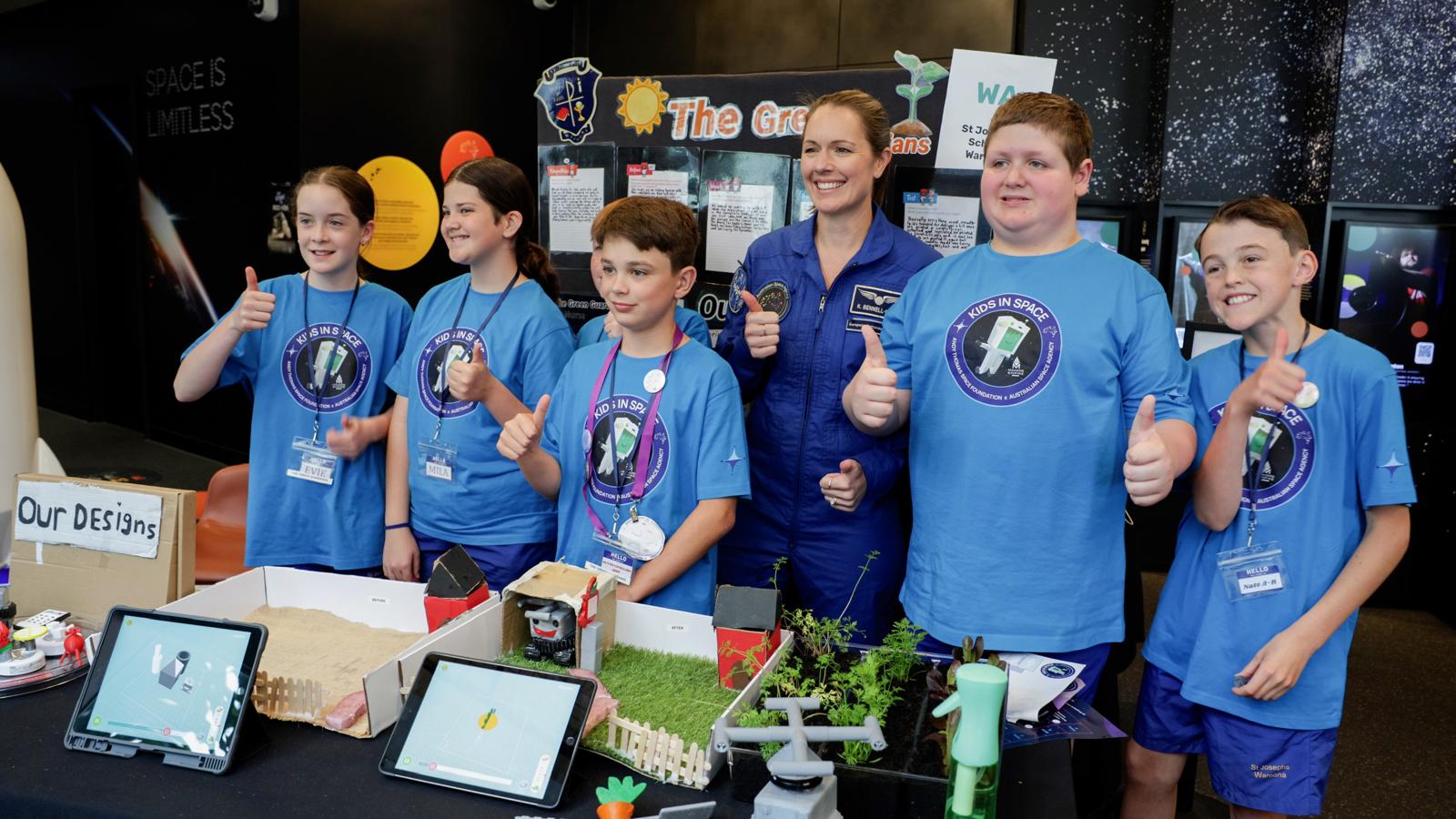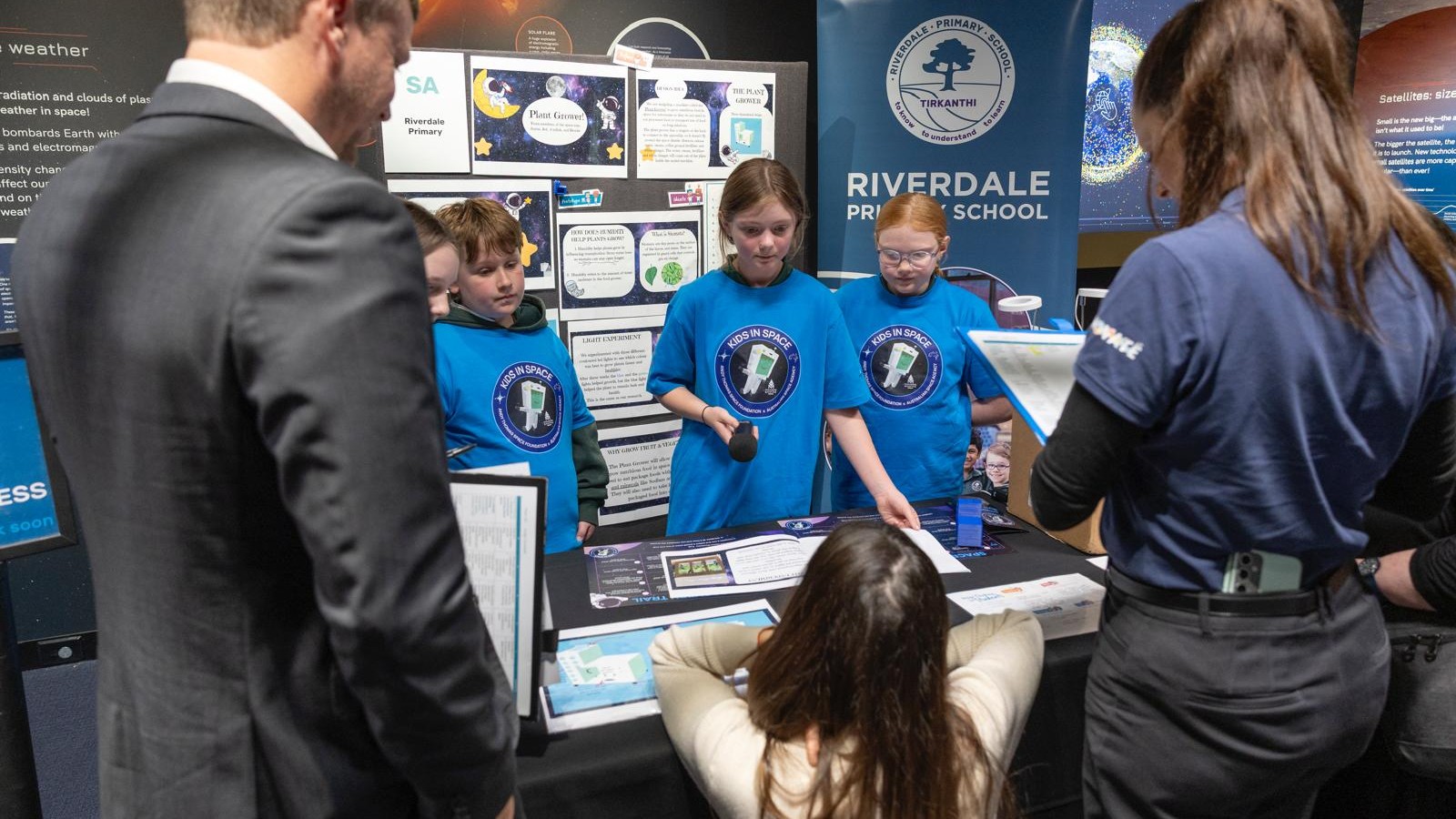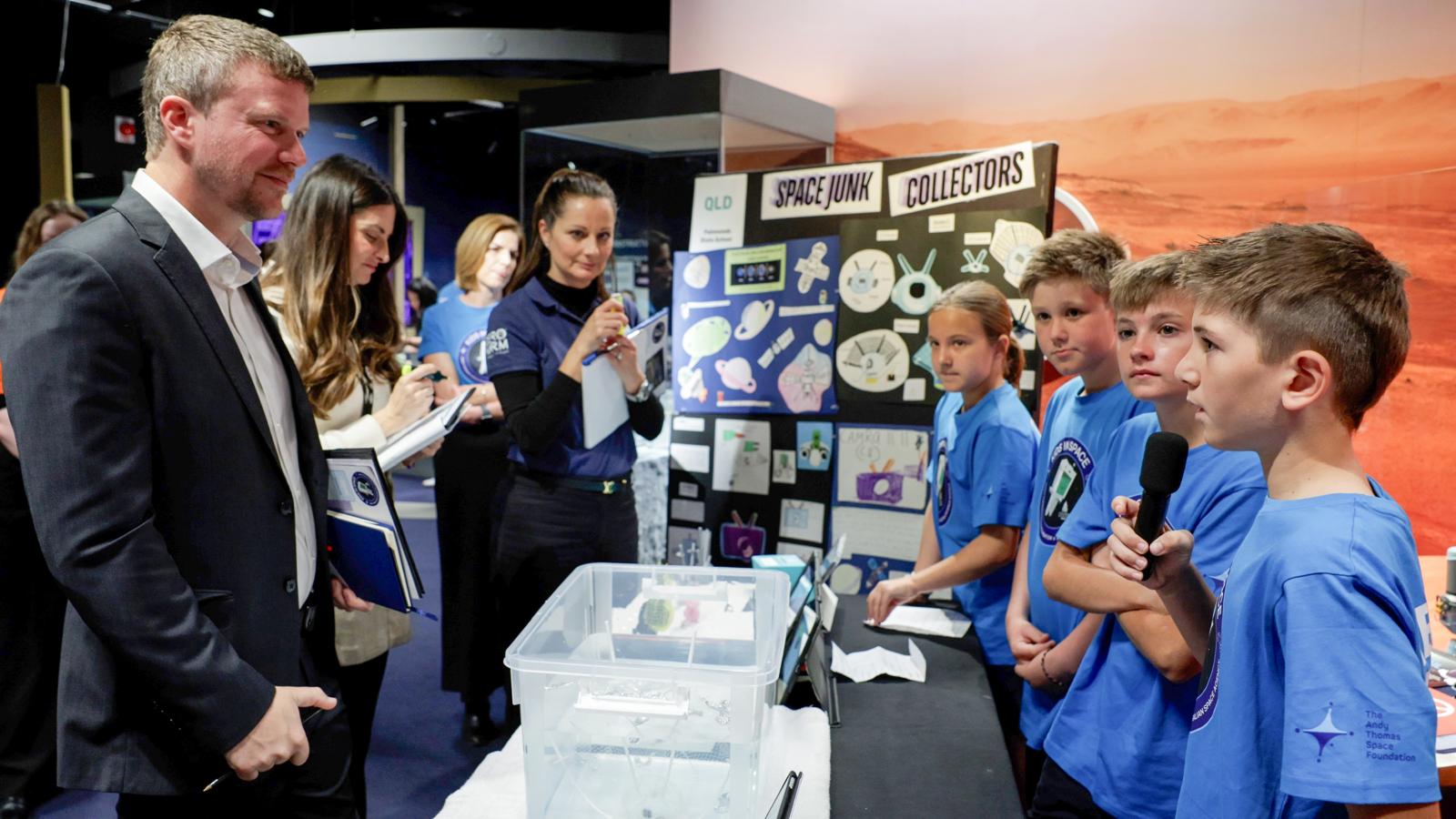The Australian Space Discovery Centre became the launchpad for some of the nation's brightest young minds today.
Space and STEM superstars from every corner of the country gathered in Adelaide for the National Finals of the Kids in Space program.
The Australian Space Agency has been a supporter of the program since its inception. Now in its third year, this groundbreaking program by the Andy Thomas Space Foundation and delivered by Makers Empire, aims to inspire space-themed STEM learning and design thinking among the next generation.
Since its launch, Kids in Space has reached 30,000 students, hundreds of teachers, and more than 265 schools nationwide. The program latest edition expanded to regional hubs like Gympie, Wangaratta, and Parkes — proving that space really is everywhere.
Future Aussie space ingenuity on display
From ocean-cleaning rovers to space junk collectors, primary and middle students showcase bold STEM solutions shaping the future of Earth and beyond.
Seven school teams displayed their space-inspired design solutions to industry judges, Australian astronaut Katherine Bennell-Pegg, and the Governor of South Australia Her Excellency the Honourable Frances Adamson AC.
Palmwoods State School from Queensland took out the national prize, with a solution to address space debris. Students conceptualised a junk collector to recycle space junk, and increase space sustainability. Their design solution included capturing debris in a net and brings it back to Earth for sorting and recycling.
Sattler Christian College from Northern Territory took out the industry award for their three robots designed to combat pollution.
The National Finals also featured teams from:
- Neville Public School (Parkes, New South Wales)
- Mount Beauty Primary School (Wangaratta, Victoria)
- St Joseph’s Waroona (Western Australia)
- Riverdale Primary School (South Australia)
- Wanniassa School (Australian Capital Territory)
Each school received a $7,000 package including teacher training, access to Makers Empire’s 3D design tools, a space-themed challenge course, and a 3D printer—ensuring students have the resources to bring their ideas to life.
Shaping the next space and STEM generation
“With over 700 applications from teachers nationwide, it’s clear that schools recognize the importance of space and STEM skills for Australia’s future workforce,” said Peter Nikoloff, Executive Director of the Andy Thomas Space Foundation. “We’re excited to inspire more students and teachers to explore space and its endless opportunities.”
Jon Soong, CEO of Makers Empire, echoed this sentiment: “We love engaging students in STEM learning with real-world applications and helping them develop vital skills in problem-solving, collaboration, and critical thinking.”
Media gallery
Click on the images to read more about each school's projects.
Students from Neville Public School from New South Wales addressed the problem of First Nations knowledge of the night sky being lost and impacted by light pollution, by designing multimedia, intergenerational interactive stories based on significant star constellations.
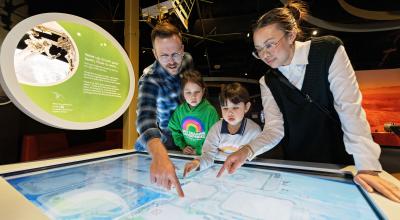
Australian Space Discovery Centre
Visitors of all ages can explore the latest innovations in space technologies, through a range of interactive exhibits and displays.
Main image caption: (L-R) Students from Palmwood State School along with Michael Davis AO , Cambell Pegg, Katherine Bennell-Pegg, Her Excellency the Honourable Frances Adamson AC, Governor of South Australia, Steve Georganas MP, and Head of the Australian Space Agency Enrico Palermo.
Credit for all images in this article: Mel Harmer, Makers Empire.
